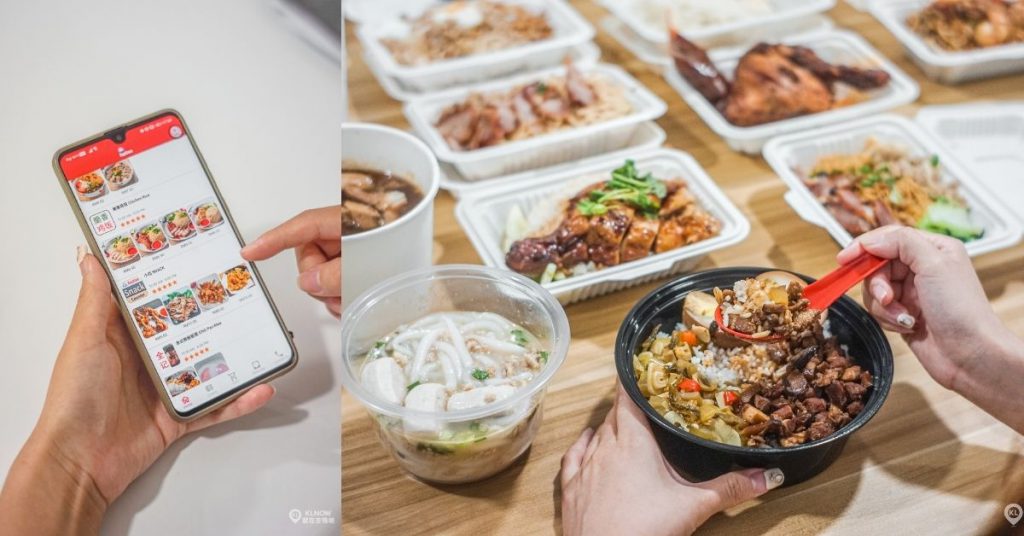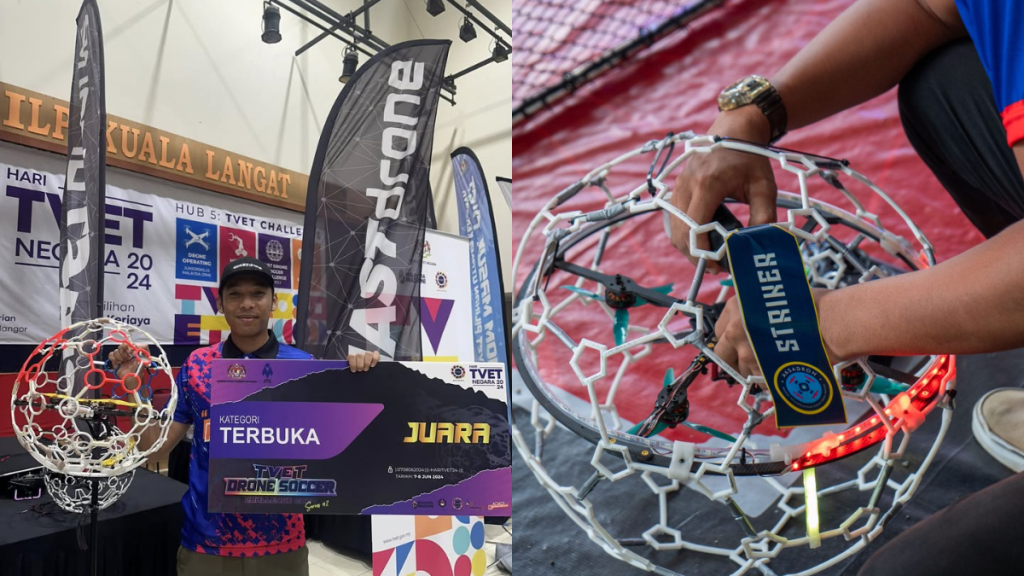Author’s Blurb: As a young working professional, cheap decent food reminiscent of my mum’s homecooked meals is what I’m more drawn towards these days, since I’m trying to save up more.
But the pandemic didn’t make it easy to access hawker food, and options on popular apps like Grab and foodpanda were limited. Noticing this gap in the market, Tan wanted to put his background of 20 years in the software industry to good use.
Moreover, as a customer of both the aforementioned apps, Tan was also aware of how high the prices of meals were in these apps. Thus, he launched Air Kopitiam to tackle these issues via a cloud kitchen and an app.
Hawker food haven
On the app, you’ll find almost all the typical stalls you’d see in a big hawker centre. There’ll be the usual wantan mee, chicken rice, char kuey teow, chilli pan mee, kopitiam Western food, curry mee, bak kut teh, porridge, satay, fish ball noodles, etc.

In fact, Air Kopitiam itself is also a vendor in the app selling drinks, kaya bread, and half-boiled eggs, the way an actual kopitiam owner would.
Air Kopitiam is located in Taman Taynton View, Cheras, and the hawkers run their businesses in what’s essentially a large, open cloud kitchen that operates from 10AM to 8PM daily. Currently, it has 35 hawkers onboarded (manning a total of 120 stalls) and 18 riders from its own fleet to fulfil orders. While dine-in options are available there, it’s running mainly on its delivery services as of now.
One thing to note is that even though Tan’s goal is to make affordable hawker food more accessible, Air Kopitiam’s food is marked up 10% higher than what you’d find in a regular kopitiam. I’d say it’s fair considering the digitalisation efforts needed to make the business work.
Comparing its food prices against Grab or foodpanda though, there are definitely a lot more options below RM10 on Air Kopitiam, which points to Tan’s goal still being achieved.
Timing is key
Tan shared with Vulcan Post that their entire operations run on logic so the timing has to always be on point to ensure that operations are as efficient as possible. Behind the scenes, this is what goes on.

“You ordered from three hawkers, let’s say the first one is char kuey teow, the second one is wantan mee, and third is pork noodles,” Tan gave an example.
“Let’s say the wantan mee is the only one that’s busy among the three and will need about 20 minutes to finish cooking [and to] put the meal on the conveyor belt to be delivered to the control tower (where the riders collect the food from). Hence, the other cooks will not be notified to start cooking until the wantan mee vendor is ready so that all three meals will reach the control tower at the same time.”
This system helps ensure that all the food made will not only remain fresh, and also so that they don’t keep their riders waiting for a long time.
Since timing is so critical to their operations, Tan decided to employ their own fleet of riders instead of outsourcing third-party riders, which he finds is more reliable when it comes to delivering the fresh food to their customers in a timely manner.
As Air Kopitiam is behind both the app and the centre’s software, it’s also much easier for the team to control the overall efficiency and tackle any predicted or sudden issues.

Empowering older and semi-retired folks
To be an Air Kopitiam vendor, Tan charges about RM800 to RM1,200 per month for rent. On average, his vendors make about RM100 per day in sales and Air Kopitiam gets about 100 to 200 orders per day.
“This is actually very low but it helps them get through times like this,” Tan shared with Vulcan Post.
Most of their vendors are of the older crowd and are semi-retired, but despite their old age, a lot of them took interest in this modern hawker concept to work with. “They like this method of doing business. They can relax in the store instead of relaxing at home without making money,” he described.

As the centres these hawkers were originally in weren’t doing too well, they didn’t hesitate to make the switch, Tan said. Furthermore, a big selling point Air Kopitiam has is that there, hawkers don’t need too many hands on deck (serving, collecting money, etc.) so it saves them money on manpower. All they need to focus on is cooking their best.
Because Air Kopitiam wants to have a variety of vendors on their app, they don’t take more than one provider of the same food (e.g. they won’t hire 2 chicken rice hawkers). To onboard these hawkers, Tan would just have them whip up a simple meal for the Air Kopitiam team to try, and if the quality and taste are up to their standards, business it is.
Potential in the food delivery market
Though I haven’t ordered from the app yet, I’d say that so far the UX is pretty smooth and simple to navigate around. The graphics are not as polished as the other established food delivery apps, but it doesn’t hinder the experience too much.
A roasted chicken rice and Cham ‘O’ would cost me only RM9.50, which may be slightly pricier than dining in at a kopitiam, but definitely much cheaper than what I’d get on Grab or foodpanda. However, the delivery fee is RM6, which is around the fee I’d pay for food deliveries from Grab or foodpanda when ordering from the same area.

Delivery time is about 43 minutes (during peak hours for dinner) despite my place to Taynton View being less than a 10-minute journey by car. For now, the wait is justifiable since digitalisation would mean the hawkers get more orders at a time, and Air Kopitiam’s rider fleet is still small too.
If Air Kopitiam wants to scale to reach more Malaysians across the Klang Valley, it’s likely that it’ll have to open up more centres and hire more riders. That being said, its current ability to empower older hawkers in the digital age to continue earning their own income is a good starting point.
Bottom Line: Hawker food will always be in demand despite not being as accessible at times like this, and Air Kopitiam is an example of how we can fill in that gap in the market. Overall, I do see potential in what they do because they are very competitive in terms of pricing and convenience, which are two of the most attractive things in the F&B scene during the pandemic.
- You can learn more about Air Kopitiam here.
- You can read about more Malaysian startups we’ve covered here.
Featured Image Credit: Tan, founder of Air Kopitiam













